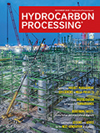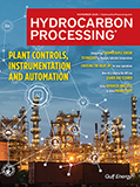Valves
Double-suction centrifugal compressor in ethylene plant inlet piping design
Centrifugal compressors are designed with different suction nozzle orientations and impeller layouts in casing.
Fuels and chemicals: Finding the right refinery configuration for a less predictable world
The refining industry links the upstream production of crude oil with the end markets for fuel products, as well as for the petrochemical/chemical industry.
Innovations
Cowan Dynamics has made advancements to its “C-PAC Module” Pneumatic Manifold and launched the C-PAC store.
Benefits of using a master station for actuator supervision and control in metering skids
Valve automation in metering skids for the oil and gas industry is a challenging task.
Innovations
H2scan has released its latest product in the HY-OPTIMA™ line of sensors.
Search for advanced technique of desalter control—TON control for interface level
While it may seem like a simple vessel, the desalter is a critical section in a crude distillation unit.
Modular reed valve technology for reciprocating compressors
Hydrocarbon processing plants use reciprocating compressors for process gases in a certain flow and differential pressure range, and double-acting cylinder-piston arrangements are almost always involved.
Executive Viewpoint: How digital transformation improves safety and reduces emissions
Digital transformation is a strategy for improving performance by applying technologies for measurement, connectivity, data storage, analytics and visualization
High-frequency acoustic excitation—Part 1
Failure of a piping section at the outlet of pressure safety valves (PSVs) and control valves—where significant differential pressure exists (particularly in gas processing industries)—is a common problem in industries.
Stress qualifications for standard and nonstandard valves in piping systems
Various types of valves are used in refineries, petrochemical plants, fertilizer plants and utilities.

- Indian Oil buys first Colombian oil under Ecopetrol contract 12/31
- Ukrainian drone attack sparks fire, damages equipment at Tuapse refinery 12/31
- Chile's $2.5-B Volta green ammonia project wins environmental permit 12/31
- China begins issuing second batch of 2026 crude import quotas to refiners 12/31
- EIA: U.S. crude, fuel inventories rose in the week ended December 19 12/30
- Ghana's Tema oil refinery restarts after 9-yr shutdown 12/30




